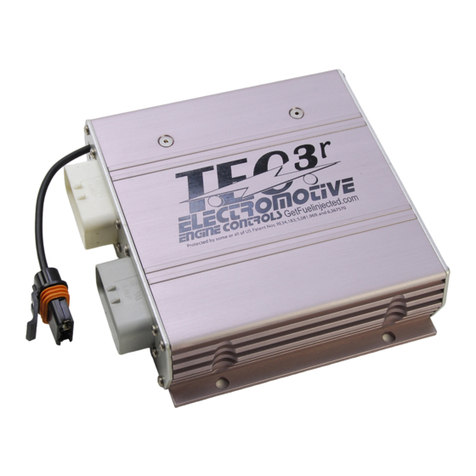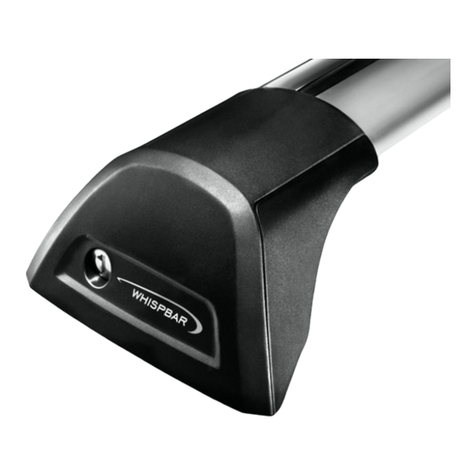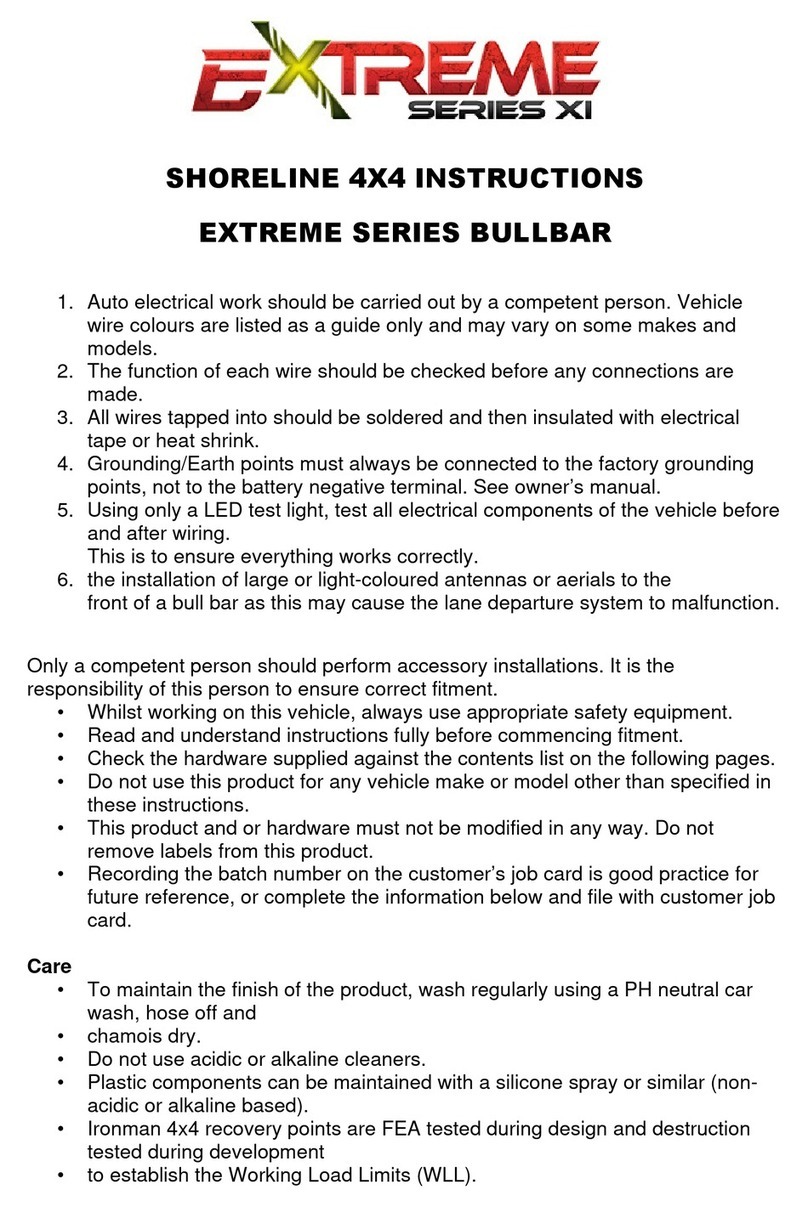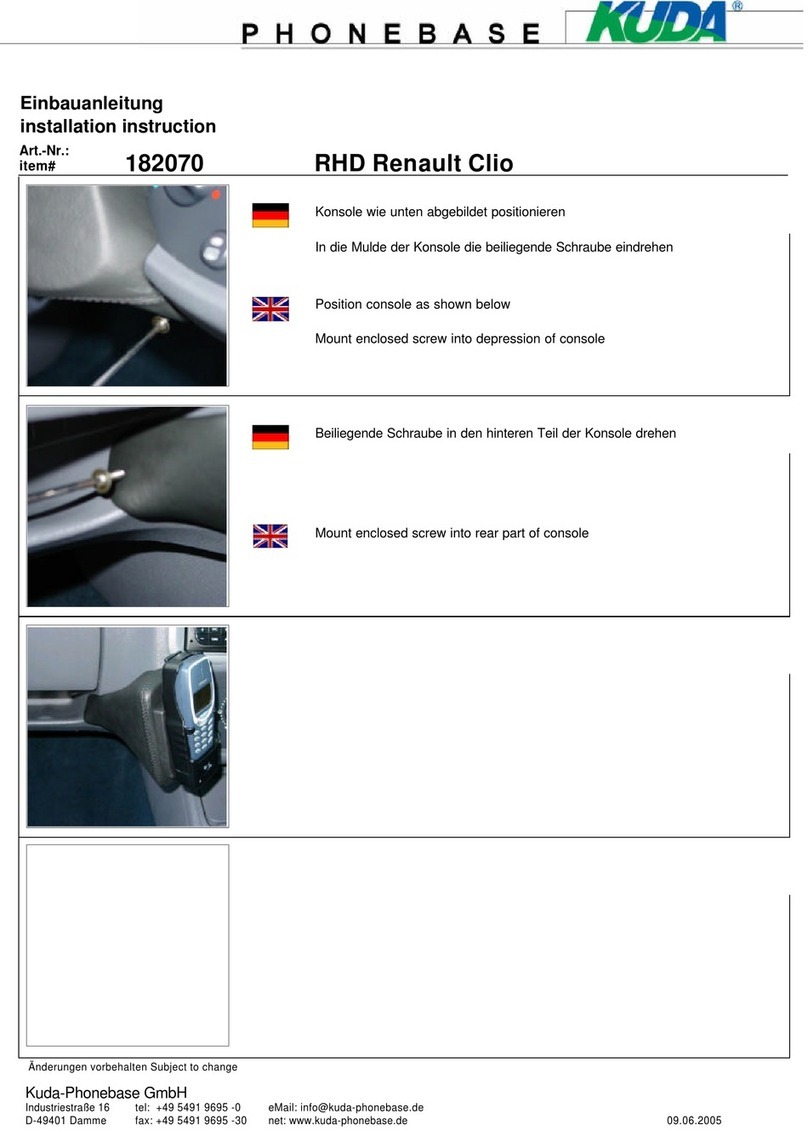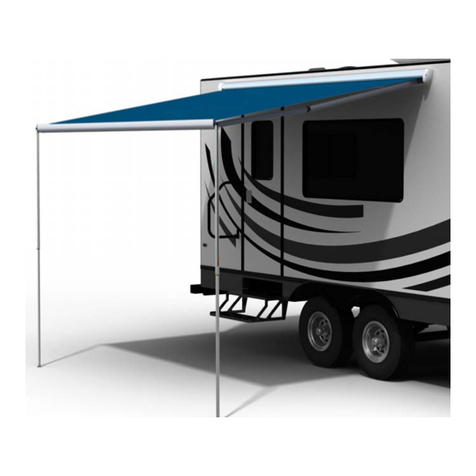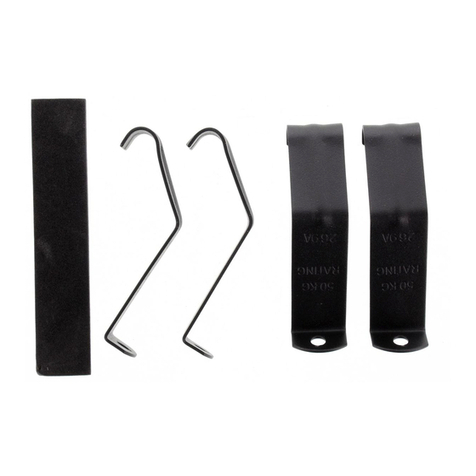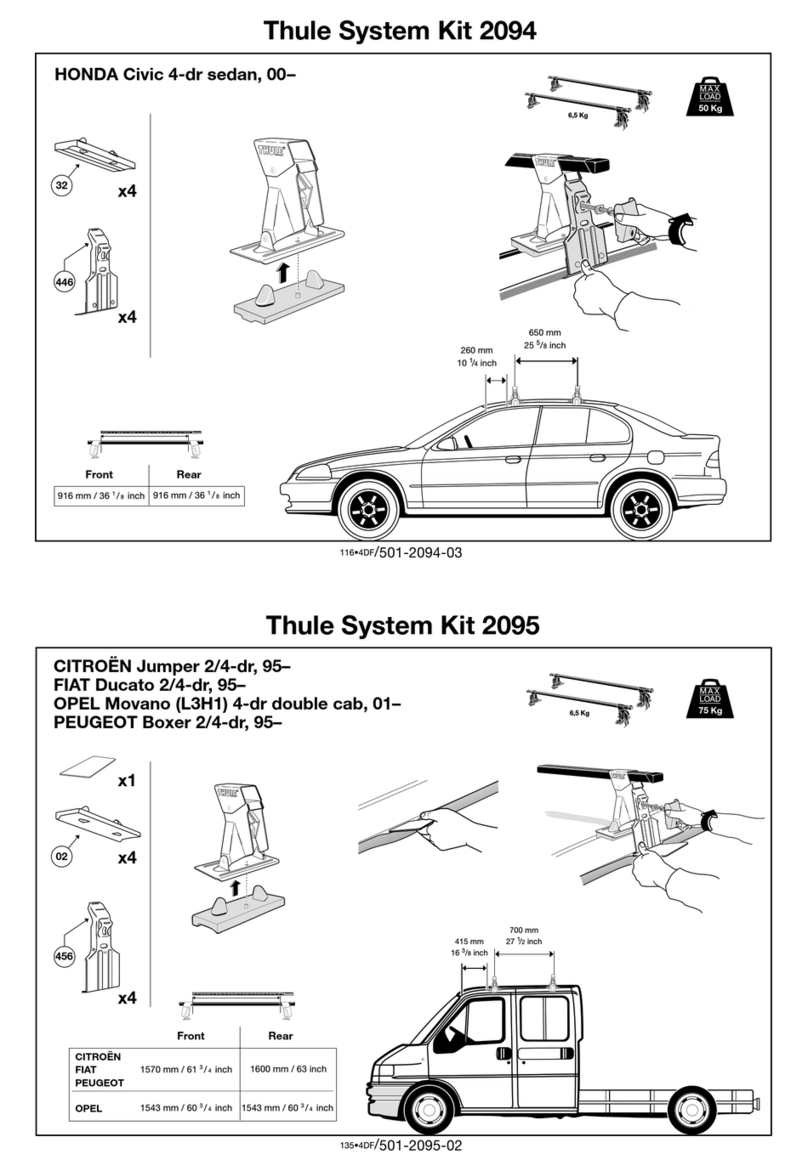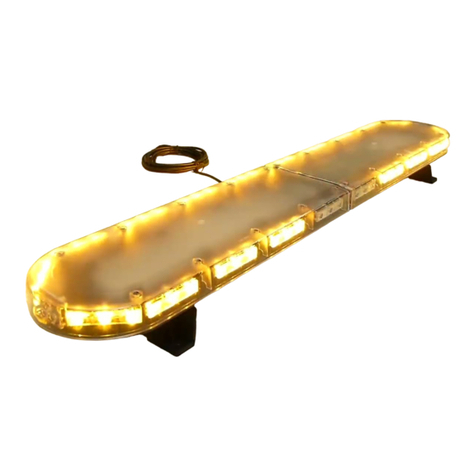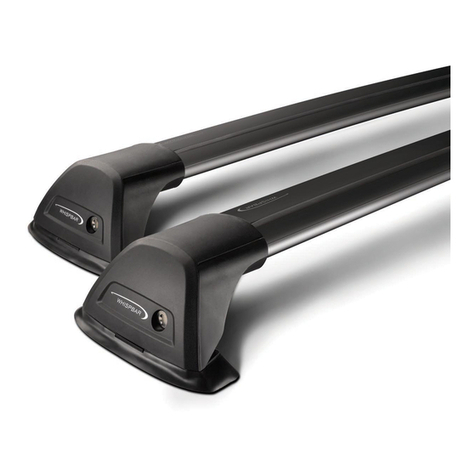Electro motive xdi Guide

Product Installation Manual
& User’s Guide
V1.8
Electromotive, Inc. 703-331-0100
9131 Centreville Road 703-331-0161 fax
Manassas, VA 20110 support@electromotive.com

XDI Manual Version 1.8 Page 2
2017 Electromotive, Inc.
Table of Contents
Terms and Conditions............................................................................................4
Electromotive, Inc. Limited Product Warranty............................................................................................... 4
New Product Limited Warranty.....................................................................Error! Bookmark not defined.
If You Need Warranty Service ....................................................................................................................... 4
Out-of-Warranty Product Repair .................................................................................................................... 4
Third Party Products and Parts ....................................................................................................................... 4
Warranty Exclusions....................................................................................................................................... 4
Determinations................................................................................................................................................ 5
Disclaimer of Implied Warranties................................................................................................................... 5
Exclusion of Damages .................................................................................................................................... 5
1.0 XDI Overview ...................................................................................................6
1.1 How Direct Fire Ignition Works............................................................................................................... 6
1.2 High Resolution Single-Crankshaft-Sensor Decoding ............................................................................. 6
1.3 Choosing Spark Plugs and Wires.............................................................................................................. 7
1.3.a Spark Plug Wire Selection................................................................................................................... 7
1.3.b Spark Plug Selection............................................................................................................................. 7
2.0 Engine Configuration Guide...........................................................................8
2.1 Engine Configuration Settings.................................................................................................................. 9
3.0 Hardware Installation....................................................................................10
3.1 Pre-Installation Checklist........................................................................................................................ 10
3.2 Cautions and Warnings........................................................................................................................... 10
3.3 Installing the Direct Fire Unit (DFU) ..................................................................................................... 10
3.4 Installing the XDI ................................................................................................................................... 11
3.5 Trigger Wheel and Sensor Installation .................................................................................................. 12
3.5.a Crankshaft Trigger Installation for 60(-2) Tooth Wheel..................................................................... 12
3.5.b Magnetic Crank Sensor Installation.................................................................................................... 13
4.0 Wiring..............................................................................................................14
4.1 Introduction............................................................................................................................................. 14
4.2 Wiring the DFU’s ................................................................................................................................... 16
4.2.a DFU to XDI......................................................................................................................................... 16
4.2.b DFU to Spark Plugs............................................................................................................................ 17
4.2.c Coil Notation....................................................................................................................................... 17
4.2.d Common Engine Setups...................................................................................................................... 18
4.2.e Common Firing Orders....................................................................................................................... 18
4.2.f Odd-Fire Engines................................................................................................................................. 19
4.2.g To find the TDC Event Order :........................................................................................................... 20
4.2.h Rotary Engines.................................................................................................................................... 20
Single Tower Coils are used for this application.......................................................................................... 20
4.2.i Dual Plug Engines ............................................................................................................................... 20
4.3 Crank Sensor........................................................................................................................................... 21
4.4 Power and Ground .................................................................................................................................. 22
5.0 Functional Description...................................................................................23
5.1 Overview of Ignition Timing.................................................................................................................. 23
5.2 Adjusting the Timing.............................................................................................................................. 23
5.2.a Initial Knob ......................................................................................................................................... 24

XDI Manual Version 1.8 Page 3
2017 Electromotive, Inc.
5.2.b “3000” Knob ....................................................................................................................................... 24
5.2.c “8000” Knob ....................................................................................................................................... 24
5.3 Measuring Timing................................................................................................................................... 25
5.4 External Advance Control....................................................................................................................... 26
5.4.1 Vacuum Advance (a.k.a. Boost Retard)............................................................................................... 26
5.5 External Retard Control.......................................................................................................................... 26
5.5.a Backup Sensor..................................................................................................................................... 27
5.6 Tachometer Output ................................................................................................................................. 27
5.7 Primary and Auxiliary Rev Limiter........................................................................................................ 28
6.0 Diagnostics.......................................................................................................29
Appendix A............................................................................................................29
Appendix B............................................................................................................31

XDI Manual Version 1.8 Page 4
2017 Electromotive, Inc.
Terms and Conditions
Electromotive, Inc. Limited Product Warranty
Products manufactured by Electromotive (XDi Ignitions and TEC ECUs) are built to last. Many of our products
have been in service for multiple decades. Products sold, but not manufactured, by Electromotive are warranted
as described under Third Party Products and Parts.
Should your product fail to function properly during the warranty period, please first check Tech Support
information available at www.electromotive-inc.com under the Support tab. You may find that the issue is due
to something other than unit malfunction.
Our warranty period is 1 year as of January 1, 2017.
New Product Warranty:
Electromotive offers a 1 year warranty on all new XDi and TEC units, for the original purchaser only, from the
original purchase date. We warrant our products to free of defects in materials and workmanship during the
warranty period. The replacement product will, in turn, be warranted for 1year from the date of replacement.
Electromotive will pay for standard shipping to return the repaired/replacement unit to the customer, if a defect
covered under warranty is found.
Note: At Electromotive’s discretion, products that show evidence of tampering, abuse, accident damage, or
other unusual wear and tear conditions may not be eligible for warranty coverage. See details under Warranty
Exclusions.
If You Need Warranty Service:
Notify us at support@electromotive-inc.com or 703/ 331-0100 M-F 8:30 to 5:00 EST. Then, send (1) a
completed Electromotive Diagnostic & Repair Request Form, with a summary of the issues you are
experiencing, (2) a copy of your sales receipt, and (3) the XDi or TEC unit. Ship to: Electromotive Repairs,
9131 Centreville Road, Manassas, VA 20110. You must include the sales receipt, and it must clearly show
name of the seller, date of purchase and purchase amount.
Out-of-Warranty Product Repair
Should your product be out of warranty, we offer factory diagnosis and repair services. There is a small fee for
diagnosis and estimation of repair costs. Check with us for the current diagnosis fee. You will have options
including (1) repair, (2) purchasing a refurbished unit (if available), or (3) trading your old unit for a discount
on a new unit. We strive to keep our repair times to within 5 business days, plus shipping days.
Third Party Products and Parts:
We make every attempt to source third party products and parts that live up to our quality standards. In the rare
instance that one of these third party products/parts fails within 90 days of purchase, return it to us along with a
copy of your sales receipt and we will replace it with a new, remanufactured, or refurbished product, unless an
exclusion listed under Warranty Exclusions applies.
Warranty Exclusions
The following conditions are excluded from warranty coverage:
1. Any product, on which the serial number has been defaced, modified or removed or does not
appear in the Electromotive serial number registry.
2. Damage, deterioration, or malfunction resulting from:

XDI Manual Version 1.8 Page 5
2017 Electromotive, Inc.
A. Accident, misuse, neglect, contamination, fire, water, lightning, or other acts of nature,
unauthorized product modification, tampering, or failure to follow instructions supplied
with the product/available for download from www.electromotive-inc.com
B. Repair or attempted repair by anyone not authorized by Electromotive.
C. Removal or installation of the product.
D. Causes external to the product, such as electric power fluctuations or failure
E. Use of supplies or parts not meeting Electromotive specifications.
F. Shipment.
G. Any cause other than a defect in a product sold or provided by Electromotive.
Determinations:
All determinations as to warranty coverage, warranty exclusion, and appropriate remedy will be made in the
reasonable discretion of Electromotive.
Disclaimer of Implied Warranties:
Apart from the above Limited Warranty, Electromotive disclaims all warranties, express or implied, including
but not limited to the implied warranties or merchantability and fitness for a particular purpose, and any
warranties that might otherwise arise from usage of trade or course of dealing.
Exclusion of Damages:
Your sole and exclusive remedy, and Electromotive’s entire obligation, for breach of warranty is repair or
replacement of the defective product. Electromotive’s liability is limited to repair or replacement of the
defective product. In no event will Electromotive be liable for any monetary damages, whether direct, indirect,
consequential, special, incidental, punitive, exemplary, or other damages, arising out of or in connection with
any product (including third party products) sold or provided by Electromotive. This exclusion applies to all
monetary damages of any kind, including but not limited to:
1. Costs of removal, installation, tuning or set up of the product before or after the malfunction.
2. Damage to, or costs of repair to, the engine or vehicle on which the product was installed or to any
other property.
3. Damages for inconvenience, loss of use of the product, loss of time, loss of profits, loss of business
opportunity, loss of goodwill, interference with business relationships, or other commercial loss, even
if advised of their possibility of such damages.
4. Claims against the customer by third parties.
5. Shipping charges from the customer to Electromotive.
6. Damages or costs resulting from a cause other than a defect in a product sold or provided by
Electromotive.
This exclusion of damages shall apply to the maximum extent permitted by applicable law and shall continue in
effect regardless of whether Electromotive has been advised or should have known of the possibility of any
particular damages, regardless of whether any exclusive remedy provided in this Agreement is deemed to have
failed of its essential purpose, and regardless of whether the customer is deemed to have been left without an
effective remedy.

XDI Manual Version 1.8 Page 6
2017 Electromotive, Inc.
1.0 XDI Overview
The XDI is the latest ignition system from Electromotive. This new, configurable ignition system uses a
controller with one or two Direct Fire Units (DFU) to power up to 14 different engine configurations. The XDI
uses Electromotive’s direct fire ignition and it’s high-resolution crank position sensing to produce the most
accurate and most powerful ignition available in the aftermarket.
1.1 How Direct Fire Ignition Works
A "Direct Fire" ignition fires the spark plugs directly from the coils and not through a distributor cap and
rotor. This is accomplished by using multiple coils, each with two spark terminals. The coil terminals are
connected to the spark plugs, allowing one cylinder to fire on compression while its companion cylinder fires
simultaneously on exhaust. Open spark gaps in the rotor and cap are eliminated, making wear and moisture
problems a thing of the past.
What sets XDI apart is the ability to charge multiple ignition coils at the same time. This increased dwell
time means that full spark energy is available over the entire RPM range (up to 9600 at 12 volts). Unlike
Capacitive Discharge systems that only put out one very short spark, the XDI puts out a full energy, long
burning spark at your highest and most critical engine speeds. Long burn times assure effective burning of even
lean fuel mixtures.
The brain of the XDI includes dual digital microprocessors using spark algorithms which takes the
electrical signal from the crankshaft sensor, identifies the two missing teeth and then keeps track of the
remaining 58 teeth. The XDI determines engine speed and computes the spark advance from your knob settings.
Setting the timing advance curve is a simple task that anyone can understand.
In addition to synchronizing and firing the plugs at the correct advance angle, the XDI also computes the
exact dwell to produce 9 amps of coil current. Coil charging is measured dynamically, so changes in RPM,
battery voltage, or temperature are all accounted for on every spark. This corrects any errors that are caused by
battery voltage or coil temperature changes and insures maximum spark energy.
1.2 High Resolution Single-Crankshaft-Sensor Decoding
Some OEM direct ignition systems use both a crankshaft and a camshaft sensor assembly, making the
system more complicated and more expensive than it needs to be. Other systems use low resolution, four to ten
tooth trigger wheels on either the crankshaft or camshaft; these are not enough teeth to assure that the coils are
firing without timing errors. The XDI solves these problems with a single, high resolution, 60-minus-2 tooth
crank trigger wheel. This affords resolution unheard of in any other electronic ignition available today, offering
spark accuracy of ¼ degree of crankshaft rotation. This accuracy makes the system ideal for the most
demanding engines.
In summary, your Electromotive XDI delivers more power because:
Spark timing is precisely controlled under all conditions, including rapid engine acceleration
Crank trigger eliminates spark scatter due to gear lash and timing chain stretch
Accurate spark timing allows sustained engine operation closer to peak power timing
100% spark energy to 9600 RPM on 6 cylinder and 12,000 RPM on 4 & 8 cylinder applications (at 12
volts)
Operation up to 20,000 RPM (at higher battery voltage)
Long, 2000 microsecond (typical) spark duration - 60duration at 10,000 RPM!
Built-in timing computer and rev limiter
No power draining magnetos or distributors to drive
No moving parts to wear out or replace

XDI Manual Version 1.8 Page 7
2017 Electromotive, Inc.
Built-in timing monitor lets you measure the advance with a voltmeter
Options include: backup sensor, dual rev limiter, and remote timing control
1.3 Choosing Spark Plugs and Wires
1.3.a Spark Plug Wire Selection
The XDI outputs an extremely high-energy charge for the ignition coils. Resistor (carbon) core wires
work best with this charging method, since they absorb electrical noise generated by the coil firing events. Use
8mm or larger RFI and EMI suppression wire with GM boots. We recommend using a carbon core-style
suppression wire with a resistance of 3,000 to 5,000 ohms per foot. SOLID CORE WIRES SHOULD
NEVER BE USED. Do not be misled by spark plug wire manufacturers claiming to give you a “power
increase” from their wire. The bottom line is that with our charging method, different spark plug wires simply
do not make a difference in terms of spark energy. However, there is a huge difference in noise generated by
different spark plug wire types (solid core wires generate a very high amount of noise with our system).
Quoted from Magnecor’s Website:
“What is not generally understood (or is ignored) is that the potential 45,000 plus volts (with alternating
current characteristics) from the ignition coil does not flow through the entire length of fine wire used for a
spiral conductor like the 1 volt DC voltage from a test ohmmeter, but flows in a magnetic field surrounding the
outermost surface of the spiral windings (skin effect). The same skin effect applies equally to the same
pulsating flow of current passing through carbon and solid metal conductors. A spiral conductor with a low
electrical resistance measured by a 1 volt DC ohmmeter indicates, in reality, nothing other than less of the
expensive fine wire is used for the conductor windings!
Electrical devices, including spark plugs, use only the electrical energy necessary to perform the function for
which such devices are designed. Spark plug wires are nothing more than conductors, and whereas a bad
ignition wire's inefficient conductor can reduce the flow of electricity to the spark plug, an ignition wire that
reportedly generates an "increase" in spark energy will have no effect on the spark jumping across the spark
plug gap, since the energy consumed at the spark plug gap won't be any more than what is needed to jump
the gap. For a more obvious example of this, a 25watt light bulb won't use any more energy or produce any
more light if it's screwed into a socket wired for a 1000 watt bulb.”
Due to the extremely high energy in the XDI coil charging circuit, spark plug wires may wear out faster
than with a standard ignition. As such, it is recommended that the wires be checked periodically for carbon
tracking caused by a breakdown of the internal conductor element. Looking at the plug wires in a dark area and
wetting them with a spray bottle of water will reveal carbon tracking. Pay close attention to the exposed section
of the spark plug (where the rubber boot ends) during the test. To maximize spark plug wire life, keep the
lengths as short as possible (i.e. mount the DFU as close to the engine as possible). Replacement of the wires
on an annual basis is recommended for high-rpm/high-horsepower applications.
For an extremely high-quality wire with excellent noise suppression, we recommend the Magnecor
brand. Specifically, their “Electrosports 80” 8mm wire is very good with our system. Custom wire lengths and
ends are available from them so you will not need to crimp the wires yourself. They can be reached on the web
at: www.magnecor.com. Taylor Pro-Wire Silicon Resistor wires also work well.
1.3.b Spark Plug Selection
As was previously stated, spark plugs are generally more important to spark quality than spark plug
wires. Most spark plugs exhibit failure when exposed to a large load. Failure usually consists of either
intermittent sparking or arc-over. Arc-over is when the spark occurs between the spark plug wire and the
engine block, instead of at the plug tip. Arc-over is exacerbated by the use of low-quality wires, or wires that
have cuts in the insulation.
The load at which a spark plug fails is different for all spark plugs. With the XDI’s charging circuit, the
more load you put on an engine, the more voltage will be applied to the plug. This is a beneficial situation: for

XDI Manual Version 1.8 Page 8
2017 Electromotive, Inc.
a high compression engine, the voltage at the plug will be inherently higher (since there is more load). The
detriment is that spark plugs and wires are only rated to a certain voltage (30-40,000 volts is typical), and can
begin to “blow out” at around 40,000 volts. If that voltage is exceeded by a large amount for a long enough
length of time, the spark plugs will either blow out, break down or arc to somewhere other than the electrode
(often through the insulator directly to the engine block).
The solution is to run smaller plug gaps on high-compression engines. This is perfectly acceptable with
our ignition charging method, since the high load of the cylinder pressure will allow the voltage to be quite high
at the electrode, but the small gap will keep the plug from seeing an over-voltage situation. Use the
recommendations below as a guideline for spark plug gaps:
Stock Street Engine 0.045”-0.060” (1.1mm-1.5mm)
High Performance Street 0.030”-0.035” (.75mm-.9mm)
Alcohol High Compression 0.025” (0.65mm)
High Power 75 -115 HP per Cylinder 0.025” (0.65mm)
Over 115 HP per Cylinder 0.022” (0.55mm)
Over 12:1 CR or Over 14psi Boost 0.022” (0.55mm)
Use of resistor plugs is highly recommended for optimum noise suppression. If using anything other
than a resistor spark plug wire, a resistor plug MUST be used. The bottom line is this: the XDI system uses an
inductive (long duration charge at battery voltage) charging method for the coils, which is completely different
than the capacitive (short duration charge at higher-than-battery voltage) charging method used by several other
aftermarket manufacturers. What may work well for these systems may not work well for ours. Following our
recommendations about spark plug and wire selections will yield excellent results.
2.0 Engine Configuration Guide
The XDI is a completely configurable ignition system. The same XDI can be used for all the engine
configurations listed below.
1 Cylinder
2 Cylinder 2 Stroke Twin-Fire
3 Cylinder 2 Stroke
4 Cylinder - 2 Stroke
- 4 Stroke
- Dual Plug
- Odd-Fire
6 Cylinder - Even-Fire
- Odd-Fire
- Dual Plug
8 Cylinder
- also with a 4 Cylinder Tachometer Output
12 Cylinder
- also with a 6 Cylinder Tachometer Output
Rotary –1,2 or 3 Rotor
To select between various engine configurations, 8-dip switches must be adjusted. An Electromotive
Value Added Dealer typically performs the configuration procedure. This manual provides an overview of the
configuration settings, if the switches need to be checked or the configuration changes.

XDI Manual Version 1.8 Page 9
2017 Electromotive, Inc.
2.1 Engine Configuration Settings
To select between various engine configurations, 8-dip switches must be adjusted. To access the
dipswitches, remove the four screws on the cover plate on the end of the XDI with the knobs. This is shown in
Figure 1.
The switch positions for each engine configuration are listed in Table 1.
NOTE: The XDI is shipped from the factory with all the switches DOWN. This will cause the status light to
be solid red when the XDI is powered. The desired configuration must be set before the XDI will function.
NOTE: Be sure that the dipswitch “clicks” into place. This may require the use of a small screwdriver.
*NOTE: 12
cylinder
configurations
MUST be aligned
to the 8th tooth.
All other
configurations
must be aligned
to the 11th tooth.
Table 1 –Engine
Configuration
Settings
SW1
SW2
SW8
SW3
SW4
SW5
SW6
SW7
The UP position
The DOWN position
Figure 1 -
Picture of
XDI with
Cover Plate
Removed
Engine Configuration
Tach
SW1
SW2
SW3
SW4
SW5
SW6
SW7
SW8
1 Cylinder
1 Cyl
UP
UP
UP
DOWN
DOWN
DOWN
DOWN
DOWN
2 cylinder 4 stroke
1 Cyl
UP
UP
UP
DOWN
DOWN
DOWN
DOWN
DOWN
2 Cylinder 2 Stroke
4 Cyl.
DOWN
DOWN
UP
DOWN
DOWN
DOWN
DOWN
DOWN
3 Cylinder 2 and 4 Stroke
6 Cyl.
UP
DOWN
DOWN
DOWN
DOWN
DOWN
DOWN
DOWN
4 Cylinder 2 Stroke
4 Cyl.
DOWN
DOWN
UP
DOWN
UP
DOWN
DOWN
UP
4 Cylinder 4 Stroke
4 Cyl.
DOWN
DOWN
UP
DOWN
DOWN
DOWN
DOWN
DOWN
4 Cylinder Dual Plug
4 Cyl.
DOWN
DOWN
UP
DOWN
DOWN
DOWN
DOWN
UP
4 Cylinder Odd-Fire
4 Cyl.
DOWN
DOWN
UP
DOWN
UP
DOWN
DOWN
UP
6 Cylinder Even-Fire
6 Cyl.
UP
DOWN
DOWN
DOWN
DOWN
DOWN
DOWN
DOWN
6 Cylinder Odd-Fire
6 Cyl.
UP
DOWN
DOWN
DOWN
DOWN
UP
UP
DOWN
6 Cylinder Dual Plug
6 Cyl.
UP
DOWN
DOWN
DOWN
DOWN
UP
DOWN
DOWN
8 Cylinder
8 Cyl.
DOWN
DOWN
UP
UP
UP
DOWN
DOWN
UP
8 Cylinder
4 Cyl.
DOWN
DOWN
UP
DOWN
UP
DOWN
DOWN
UP
12 Cylinder *SEE NOTE
12 Cyl.
UP
DOWN
UP
DOWN
UP
UP
DOWN
DOWN
12 Cylinder *SEE NOTE
6 Cyl.
UP
DOWN
UP
UP
UP
UP
DOWN
DOWN

XDI Manual Version 1.8 Page 10
2017 Electromotive, Inc.
3.0 Hardware Installation
The minimum installation of an XDI requires three main components. These include an XDI, a Direct
Fire Unit (DFU), and crank trigger wheel with a sensor.
3.1 Pre-Installation Checklist
To perform a complete XDI installation, the following items are required:
1. XDI Controller
2. DFU(s)
3. Wire Harness (additional harness required for configurations requiring 2 DFU’s)
4. Resistor Core Spark Plug Wires (see notes on Spark Plug Wires)
5. XDI Wiring Harness
6. Crank Position Sensor (Magnetic Sensor)
7. 60 (-2) Tooth Crank Trigger Wheel
8. Drill
9. ¼” Bolts for DFU(s) & XDI Controller
10. Wire Stripper
11. Wire Crimper
3.2 Cautions and Warnings
1. DANGER! The XDI generates high voltages that can be lethal. Do not ever touch a coil tower or spark
plug wire when there is a chance of a spark. Without the spark plug wires on the coils and spark plugs,
the system will generate dangerous levels of voltage that can damage the XDI. This can also lead to fatal
electrocution.
2. Do not let the spark plug wires touch the block, head, frame or body. The power of this ignition can burn
through most spark plug wire insulation. Use a quality 8mm (or larger) wire with two-piece spring-
loaded contacts and wire separators.
3. Replace spark plugs wires every year (recommended).
4. Remove any series (ballast) resistance in both the +12 volt power (red) and the ground (black) wires. All
connections must be clean and tight.
5. A fully charged battery is necessary for optimum performance of the system. During cranking, the
battery voltage should not fall below 6 volts. If the battery is old, replace it.
6. Do not operate the standard XDI continuously at more than 18 volts. 24V units are available for special
applications.
7. Double battery jump-starts can damage the XDI.
Never disconnect the alternator while the engine is running. This may cause destructive high voltage spikes.
3.3 Installing the Direct Fire Unit (DFU)
The DFU(s) can be placed nearly anywhere under the hood of the vehicle where the temperatures are
below 250oF (120oC). Since they are entirely sealed, exposure to the elements is not an issue. The DFU
Ground Wire MUST be installed to vehicle ground.

XDI Manual Version 1.8 Page 11
2017 Electromotive, Inc.
Figure 2 : 2 - Coil DFU Dimensions and 3 - Coil DFU Dimensions
3.4 Installing the XDI
For utmost reliability, install the XDI computer where temperatures will not exceed 150oF (65oC). It is
recommended that the XDI computer be installed in the passenger compartment of the vehicle where it will not
be exposed to the elements. A good location is in the kick panel of a vehicle originally equipped with a factory
ECU. If the XDI must be mounted in an area that is partially exposed to the elements, there should not be a
problem; the circuit board is completely sealed for harsh environment installations.
Secure the controller with four ¼” socket head cap screws. The wiring harness should be passed
through the firewall using a suitable grommet to avoid chafing. It is recommended that the XDI and DFU be
separated by at least six inches for the purpose of reducing electrical noise in the XDI.
Figure 3 –
XDI Dimensions

XDI Manual Version 1.8 Page 12
2017 Electromotive, Inc.
3.5 Trigger Wheel and Sensor Installation
The foundation of the XDI ultra-high resolution ignition is the 60(-2) tooth
trigger wheel. The trigger wheel is designed to give uncompromising timing
accuracy at the highest engine acceleration rates. As such, Electromotive does not
support other triggering systems, particularly those of the “flying magnet” variety.
These systems can lead to vastly inaccurate spark timing, and can contribute to
engine damage. For most applications, the 60(-2) tooth trigger wheel is mounted
on the crankshaft damper or pulley. Some applications may warrant the use of a
camshaft- or distributor-mounted trigger wheel. With this setup, a 120(-4) tooth
trigger wheel is necessary, since the camshaft turns at half the speed of the crank.
3.5.a Crankshaft Trigger Installation for 60(-2) Tooth Wheel
For a crankshaft-mounted trigger wheel setup, an appropriate place must be found to mount the wheel
and trigger. Typically, the easiest place to mount a trigger wheel is on the harmonic damper or pulley. If it is
mounted on a damper, it should be mounted on the inner hub rather than the outer dampening ring. The
damper/pulley must be keyed to the crankshaft so that it cannot spin on the crankshaft, as this would cause an
ignition timing error. When using a damper that has bolt-on pulleys, the trigger wheel can usually be mounted
between the pulleys and the damper. However, the accessory pulleys will need to be shimmed out by 1/8” (the
thickness of the trigger wheel). A variety of application-specific trigger wheels are available. Universal trigger
wheels are also available in a variety of sizes.
To choose the proper size trigger wheel, find the diameter of the pulley or damper on which the wheel is
to be mounted. The trigger wheel diameter should be at least ½” larger than this diameter. It should also be
noted that the trigger wheel should be at least ¼” from any moving magnetic pieces, such as bolts or other
fasteners, to avoid interference and false triggering. It is important that the trigger wheel be perfectly concentric
with the crankshaft centerline. To achieve concentricity, a shallow cut can be machined in the front or rear face
of the damper to create a centering ledge, and a hole can be created in the trigger wheel to match the ledge
diameter. The trigger wheel can then be drilled to bolt it to the damper.
See Table 2 below to determine the tolerances that must be maintained when mounting the trigger
wheel. These tolerances may require the use of a lathe to true the trigger wheel with the crankshaft centerline,
which can be accomplished by putting the entire damper/trigger wheel assembly on the lathe. Note that the
maximum out-of-round is the distance between the lowest and highest teeth and the crank sensor. That is, if a
feeler gauge is used between the sensor and the wheel to measure the out-of-round, the reading between the
lowest and highest teeth should not exceed the guidelines in the table.
Trigger
Wheel
Size
Air Gap
Maximum
Out-of-
Round
2.5"
0.025" max
0.002"
3.5"
0.035" max
0.003"
5"
0.050" max
0.005"
6"
0.060" max
0.006"
7.25"
0.070” max
0.007"
8.25"
0.080” max
0.008"
Table 2 –
Crank Trigger Specifications

XDI Manual Version 1.8 Page 13
2017 Electromotive, Inc.
3/8” Diameter
Chisel Point
Sensor
PN: 250-72219
1/2” Diameter
Flat Tip
Sensor
PN: 255-72250
All 120 (-4) Tooth
X
2-3/8” & 2-1/2” 60 (-2) Tooth
X
3-1/2” 60 (-2) Tooth (below 6000rpm)
X
3-1/2” 60 (-2) Tooth (Above 6000rpm)
X
Greater than 3-1/2” 60 (-2) Tooth wheels
X
3.5.b Magnetic Crank Sensor Installation
When installing the magnetic sensor, an appropriate bracket must be made to aim the sensor at the
trigger wheel. A good starting point for a magnetic sensor bracket is Electromotive part number 210-72003,
which is our universal sensor bracket. If this part is not used as a starting point, a custom bracket can easily be
made. The most important things to remember when fabricating a bracket are that it should be bolted
directly to the engine block, away from rotating steel or magnetic pieces, and should be nonferrous (not
attracted to magnets). This will keep the sensor and trigger wheel vibrating together so the gap between the
two always stays the same. Variations in sensor gap may cause erratic timing or false triggering of the ignition.
(This is the reason for not mounting the trigger wheel to the outer ring of a harmonic damper.) As such, any
custom magnetic sensor bracket should be very rigid. The sensor can be secured with either a setscrew or a
clamping arrangement, as long as the 1/2” sensor is utilized (part number 250-72250). If the smaller 3/8”
sensor is utilized, a clamping arrangement should be employed rather than a setscrew, as the setscrews may
crush the sensor. See Table 3 for the appropriate magnetic sensor/trigger wheel combinations.
Once a magnetic sensor and trigger wheel are installed, they must be aligned such that the XDI knows
where to locate Top Dead Center of the #1
cylinder (referred to as TDC #1). Correct
alignment necessitates that the center of
the sensor must be aligned with the
trailing edge of the 11th tooth after the
two missing teeth when the engine is at
TDC #1 (see Figure 4).
NOTE: 12 Cylinder applications require that the center of the sensor be aligned with the trailing edge of
the 8th tooth.
Table 3 –
Magnetic crank sensor
selection. Note: use a
clamping arrangement
for securing 3/8”
sensors, rather than a
setscrew. The ½”
sensors can be secured
with any clamping
method.
Figure 4- TDC tooth for the
four possible scenarios.

XDI Manual Version 1.8 Page 14
2017 Electromotive, Inc.
Aligning the magnetic sensor with anything other than the 11th tooth (8th tooth in 12 cylinder
applications) will cause an ignition timing retard or advance, depending on the direction of the misalignment.
Each tooth represents six degrees, so if the sensor is aligned with the trailing edge of the 12th tooth, the timing
will be advanced by six degrees. Conversely, if the sensor is aligned with the trailing edge of the 10th tooth, the
timing will be retarded by six degrees. If some ignition advance is required for easier starting (high
compression/radical cam timing engines, for example), aligning the sensor with the 12th or 13th tooth will yield
6° or 12° (respectively) of advance during cranking. Also check that the sensor is centered over the edge of the
wheel.
NOTE: Your electronic advance must reflect appropriately less timing to compensate for mechanical
advance.
4.0 Wiring
4.1 Introduction
The task of installing an XDI wiring harness may seem a bit intimidating at first. However, most
installers can accomplish it in a reasonable amount of time.
If this is your first experience with the XDI it is strongly recommended that you read this entire manual.
Once you are familiar with the details contained in this manual, simply use the Quick Reference Sheets
provided in Appendix B.
NOTE: Always disconnect the battery when doing ANY electrical work on a vehicle. Use common
sense when around electrical systems, particularly the DFU coils. The voltage output of the coils can be well
over 40,000 Volts at a given instant.
NOTE: Remove any series (ballast) resistors from the circuit. They are not needed and will cause the
system to malfunction. Do not attach anything else to the XDI power supply circuit.
The required electrical connections are: Switched (Keyed) Power, Ground, Crank Sensor Signal,
DFU Signal (may require 2 DFU’s depending on engine) or multiple single tower coils.
With these four connections, the XDI will turn on and create spark. The power and ground connections
are discussed in Section 4.4.
The wiring harness included with the XDI will contain everything needed for engine configurations
using one DFU. For engine configurations requiring a second DFU, the additional harness must be requested.
Table 4 lists the engine configurations with the required number of DFU’s.
Figure 5 -
Correct sensor
alignment

XDI Manual Version 1.8 Page 15
2017 Electromotive, Inc.
The harness is not fully assembled so it can be installed through tight clearances such as a hole in the
firewall. The harness assembly included with the XDI contains 3 separate pieces. These are shown in Figure 6.
Figure 6 –Included components for wiring harness
A: Main harness with 23-pin connector. See Table 5 for pin definitions. Note the 2 conductor with shield
cable is for the magnetic crank trigger sensor. After you wire the vehicle, the three wires already pinned should
be inserted into connector C as described in Section 4.3.
B: DFU cable. This cable connects the XDI to the DFU. If you are using 2 DFU’s, you will need to request a
second cable with the purchase of the XDI. The pinned end of this cable is inserted into the 23-pin Amp
connector as described in Appendix A.
Table 4 –
DFU requirements for each configuration

XDI Manual Version 1.8 Page 16
2017 Electromotive, Inc.
C: Trigger wheel sensor connector. This connects the XDI main harness to the magnetic sensor on the crank
trigger wheel. This is described in Section 4.3.
D: Additional DFU Cable. This cable is only used for configurations that use a second DFU. This cable is not
included with the XDI. This cable is provided at no additional cost, but it must be requested with the purchase
of the XDI.
The pin-out for the 23-pin AMP connector is shown in Table 5.
Pin
Description
Wire Color
1
Coil A1
White
2
Reserved
NA
3
Magnetic Sensor Shield
Bare
4
Reserved
NA
5
Reserved
NA
6
+12V Switched Ignition
Yellow
7
Reserved
NA
8
Coil A2
White
9
Coil B1
Red
10
Magnetic Sensor Ground
Black
11
Magnetic Sensor Signal
Red
12
Reserved
NA
13
External Retard Control
Orange
14
Ground
Black w/ white stripe
15
Coil B2
Red
16
Shield for DFU #1
Bare
17
Coil C1
Black
18
Tachometer
Brown
19
+5V Output
Gray w/ red stripe
20
External Advance Control
Green
21
Advance Output
Pink
22
Coil C2
Black
23
DFU #2 Shield
Bare
4.2 Wiring the DFU’s
4.2.a DFU to XDI
DFU’s are made by Electromotive in two variants: 2-coil and 3-coil. Each coil drives two spark plugs in
waste-spark ignition setups. Two cycle applications will not use waste-spark.
The first step in wiring the DFU’s is to install the ground wire. The DFU’s come from our factory with
a ground wire pre-installed on a tapped, un-anodized hole. This wire MUST be connected to chassis/battery
ground.
NOTE: Failure to ground the DFU chassis may result in severe electrical shock to the user! Electrical
shock will occur if the DFU is not grounded, and someone touches it while touching chassis ground (with the
engine running). If desired, the ground wire may be relocated elsewhere on the DFU chassis. However, you
will need to scrape off the anodizing from the chassis at the point of contact, since the anodizing acts as an
electrical insulator. Also, loose coil screws may cause an electrical shock as well, since they must be grounded
to the case at all times. Always make sure that both the coil screws and the ground wire are securely fastened.
After the DFU has been grounded, the rest of the wiring may begin. You will receive the DFU cable
Table 5 –
23-pin AMP connector pinout

XDI Manual Version 1.8 Page 17
2017 Electromotive, Inc.
with the XDI. It will consist of a 3 conductor shielded cable plus a red with white stripe wire connected to
Terminal D. This is shown in Figure 6 as item B. The red with white stripe wire should be connected to a
fused 12V source. Please refer to Section 4.4 for all power connections. In the wiring harness, the outputs for
Coils A, B, and C (coil C only on 3-coil DFU’s) are routed in the same shielded-cable housing. These are all
pull-to-ground outputs; that is, they create a ground path every time a coil charges. When the coils fire, the
outputs “float,” with no connection to ground or power. If the wires need to be spliced or lengthened, 16awg
wire should be used.
Once the DFU cable has been routed from the DFU to the XDI, you can insert the pins into the 23-pin
connector. DFU #1 uses pins 1, 9, and 17.
If you are using a second DFU, you will need to request the additional DFU cable. Follow the same
instructions for DFU #1 but run the pins to 8, 15, and 22.
NOTE: Failure to insert the pins correctly will result in a different firing order than expected.
4.2.b DFU to Spark Plugs
The coils fire in a specific order for each engine configuration. The proper coil must be connected to the
correct cylinder in the firing order.
4.2.c Coil Notation
The following notation is used when referring to coils. A letter and a number are combined to identify a
coil. The letter refers to the coil location on the DFU. The coil located closest to the connector is Coil A. The
coil next to it is Coil B. If the DFU contains three coils, the last coil is Coil C. The number identifies the DFU
that the coils are on. In an engine configuration using only one DFU, the number following the letter is 1.
When two DFU’s are used, the number 1 will identify the DFU with the cable connected to pins 1, 9, and 17.
The number 2 will identify the second DFU with the cable connected to pins 8, 15, and 22. Coil notation is
shown in Figure 7.
Note: Each coil has two towers for spark plug wires. The towers are identical and should be thought of as the
same coil. For example, if the engine setup guide refers to cylinder 1 connected to Coil A1 and cylinder 6
connected to Coil A1, you can connect your spark plug wires for the respective cylinders to EITHER tower.
Figure 7 - Coil notation
Figure 7 also shows a configuration using two 3-coil DFU’s (for example : dual-plug 911 engine). If you are
using 2-coil DFU’s the numbering is the same except there is not C1 and C2. If your application requires only
the use of one DFU, then A2, B2, and C2 will not be present.

XDI Manual Version 1.8 Page 18
2017 Electromotive, Inc.
4.2.d Common Engine Setups
Engine: Chevy V8
Firing Order: 1-8-4-3-6-5-7-2
Coil Firing Order: A1 A2 B1 B2 A1 A2 B1 B2
Engine Firing Order: 1 8 4 3 6 5 7 2
As can be seen, Coil A1 will be used for cylinders 1&6, Coil B1 for cylinders 4&7, Coil A2 for cylinders 8&5,
and Coil B2 for cylinders 3&2.
Engine: Honda 4-cylinder
Firing Order: 1-3-4-2
Coil Firing Order: A1 B1 A1 B1
Engine Firing Order: 1 3 4 2
Cylinders 1&4 are paired to Coil A1. Cylinders 3&2 are paired to Coil B1.
Engine: Porsche Dual-Plug 6-cylinder
Firing Order: 1-6-2-4-3-5 (each cylinder has an “a” and a “b” spark plug)
Coil Firing Order: A1 B1 C1 A1 B1 C1 (1st DFU)
A2 B2 C2 A2 B2 C2 (2nd DFU)
Engine Firing Order: 1a 6a 2a 4a 3a 5a
1b 6b 2b 4b 3b 5b
Note: On dual-plug applications such as this one, the spark plugs in cylinder #1 should go to “Coil A” on both
DFU’s. This keeps the spark energy on the appropriate spark plugs during the compression stroke (1 coil is
devoted to 1 spark plug on compression and 1 spark plug on exhaust at all times). DO NOT run Coil A from
one DFU to both spark plugs of cylinder 1. This would place the load of two spark plugs on compression to
only one coil, and a severe performance problem would result.
Engine: 4-cylinder 2-stroke (Note : Single tower coils are used for this application.) see Figure 9.
Firing Order 1-2-3-4
Coil Firing Order: A1 A2 B1 B2
Engine Firing Order: 1 2 3 4
Engine: V12
Firing Order: 1-7-5-11-3-9-6-12-2-8-4-10
Coil Firing Order: A1 A2 B1 B2 C1 C2 A1 A2 B1 B2 C1 C2
Engine Firing Order: 1 7 5 11 3 9 6 12 2 8 4 10
Note: 12 cylinder applications require TDC #1 to occur on the 8th tooth.
4.2.e Common Firing Orders
Remember, coils are fired in the following sequence:
4 cylinder : A1-B1-A1-B1 6 cylinder :A1-B1-C1-A1-B1-C1 8 cylinder : A1-A2-B1-B2-A1-A2-B1-B2
The following Firing Orders apply to Even-Fire Engines ONLY !
DFU DFU DFU DFU
1 2 1 2
coil coil coil coil
8 cylinder –2 DFU’s Firing Order A A B B
Most GM, Chrysler, & AMC V8’s: 1-8-4-3-6-5-7-2 1&6 8&5 4&7 3&2
Chevrolet LS1 V8: 1-8-7-2-6-5-4-3 1&6 8&5 7&4 2&3
Ford 5.0L, 351W/M/C, & 400 V8’s: 1-3-7-2-6-5-4-8 1&6 3&5 7&4 2&8

XDI Manual Version 1.8 Page 19
2017 Electromotive, Inc.
Ford other V8’s: 1-5-4-2-6-3-7-8 1&6 5&3 4&7 2&8
Ford 4.6/5.4 Liter V8: 1-3-7-2-6-5-4-8 1&6 3&5 7&4 2&8
Cadillac 368, 425, 472, 500: 1-5-6-3-4-2-7-8 1&4 5&2 6&7 3&8
Cadillac Northstar: 1-2-7-3-4-5-6-8 1&4 2&5 7&6 3&8
Mercedes Benz & Audi 4.2L: 1-5-4-8-6-3-7-2 1&6 5&3 4&7 8&2
6 cylinder –3 coil DFU Firing Order A1 B1 C1 -- Coil ( 1 DFU )
Buick 3.0 & 3.8 (60oV6): 1-6-5-4-3-2 1&4 6&3 5&2
Chevrolet 2.8 (60o V6): 1-2-3-4-5-6 1&4 2&5 3&6
Chevrolet 4.3 (90oV6): 1-6-5-4-3-2 1&4 6&3 5&2
Ford 2.8 (60oV6): 1-4-2-5-3-6 1&5 4&3 2&6
Chrysler Slant 6: 1-5-3-6-2-4 1&6 5&2 3&4
Porsche Flat 6: 1-6-2-4-3-5 1&4 6&3 2&5
Datsun Inline 6 (L6): 1-5-3-6-2-4 1&6 5&2 3&4
Nissan 3.0 V6 (60oV6): 1-2-3-4-5-6 1&4 2&5 3&6
VW VR6 (15oV6): 1-5-3-6-2-4 1&6 5&2 3&4
4 cylinder - 2 coil DFU Firing Order A1 B1 -- Coil ( 1 DFU )
Most Inline 4-cyl Engines: 1-3-4-2 1&4 3&2
VW Flat 4 (air-cooled): 1-4-3-2 1&3 4&2
Dual Plug 4-cyl: 1-3-4-2 1&4 3&2
4.2.f Odd-Fire Engines
Single Tower Coils are used for the following Odd-Fire application.
For odd-fire engines, the coil firing is not separated by the same angle for all the cylinders. For example,
an odd-fire 90oV6 does not have an even 120o separation between TDC’s; it has an alternating separation angle
of 30oand 90o. For this engine, the firing order might be 1-6-5-4-3-2. (Note: the typical odd-fire V6 is a 90o
block with three connecting rod journals on the crankshaft. These were used in NASCAR’s Busch-series a few
years ago.) However, the firing order does NOT correspond to the order of TDC events for the engine. Without
concern for whether the TDC events are compression or exhaust, here is the order of TDC events for the engine:
1 TDC –30o–6 TDC –90o–5 TDC –30o–4 TDC –90o–3 TDC –30o–2 TDC
Where: 1 TDC to 5 TDC = 90o+ 30o= 120o 5 TDC to 3 TDC = 90o+ 30o= 120o
6 TDC to 4 TDC = 90o+ 30o= 120o 4 TDC to 2 TDC = 90o+ 30o= 120o
With the XDI, this type of firing scheme is done quite easily. Coils A1, B1, and C1 fire 120oapart from
each other when a 6-cylinder Odd-Fire Engine is configured in the software. Similarly, coils A2, B2, and C2
will fire 120oapart, but not at the same time as coils A1, B1, and C1. Coil A2 must fire after A1 by the
correct amount for the odd-firing sequence; in this case, since Cylinder 6 has its TDC 30oafter Cylinder
1, a 30osplit is necessary. The timing split is built into the XDI when the odd-fire configuration is selected.
Coils A1, B1, and C1 will be wired to cylinders 1, 5 and 3, respectively. Coils A2, B2, and C2 will be
wired to cylinders 6, 4 and 2 respectively.
The most important step to setting up an odd-fire engine is to determine the TDC event order for the
engine, and to find the degree split between the first two TDC cylinders. Also, the concepts of TDC Order and

XDI Manual Version 1.8 Page 20
2017 Electromotive, Inc.
Firing Order must be separated in order to fully understand what is occurring on an odd-fire distributorless
ignition.
4.2.g To find the TDC Event Order :
1. Turn the engine to TDC #1.
2. Rotate the engine in its normal direction of rotation.
3. Record the order in which the cylinders have TDC’s. It does not matter that the TDC events are
mixed between compression and exhaust during this process.
4.2.h Rotary Engines
Single Tower Coils are used for this application.
For rotary engines, the coil firing occurs on both the leading and trailing spark plugs. For a 2-rotor
engine, 4 single tower coils will be needed. References to DFU #1 will correspond to the 2 primary spark plug
coils (coil outputs A1 and B1), and will fire the leading spark plugs on rotors 1 and 2, respectively.
References to DFU #2 will correspond to the 2 secondary spark plug coils (coil outputs A2 and B2), and will
fire the trailing spark plugs on rotors 1 and 2, respectively. Typically, rotaries work well with about 7-15
degrees of split between the leading and trailing ignition under light load. This timing split option is only
available to XDI-2 users. Under full load, the engines generally make best power with closer to zero degrees
of split. A rotary will run on just the leading or trailing ignition, but a power loss will occur. Keep this in mind
when trying to diagnose ignition wiring problems.
Rotor 1 -- Leading : Coil Channel A1 Trailing : Coil Channel A2
Coil Channel A1 and A2 are split by the value in the Dual Plug Timing Split. (XDI-2 only).
Rotor 2 -- Leading : Coil Channel B1 Trailing : Coil Channel B2
Coil Channel B1 and B2 are split by the value in the Dual Plug Timing Split. (XDI-2 only).
4.2.i Dual Plug Engines
For dual plug engines, there are two spark plugs per cylinder. Although it may seem that you should
connect both towers of one coil to the two spark plugs of one cylinder, this is NOT the case. Doing so would
require one coil to fire two spark plugs that are on the compression stroke, which would have a very negative
effect on spark energy. Instead, the coils must be wired so that each cylinder will have two coils for its two
spark plugs. Refer to the example of the 6-cylinder Porsche Dual Plug engine (Figure 7) in conjuction with the
example in (Common Engine Setups) to see how the wiring should be done.
Since most dual plug cylinder heads have a hemispherical design, the spark for both plugs on an
individual cylinder should occur at the same instant for optimum flame-front propagation.
Figure 8 : 4-Cyl DFU Setup
Table of contents
Other Electro motive Automobile Accessories manuals
Popular Automobile Accessories manuals by other brands

Westfalia
Westfalia 316257600001 Assembly instructions
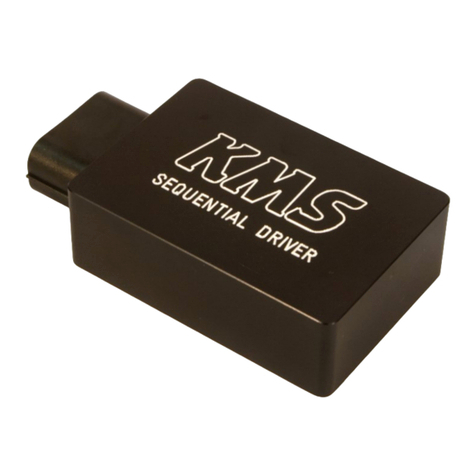
KMS
KMS Sequential driver Manual for installation and setup
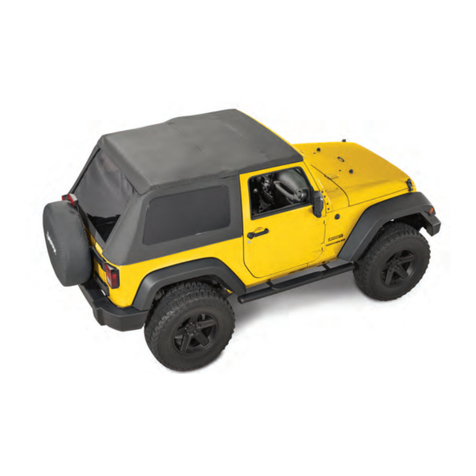
Quadratec
Quadratec QuadraTop Adventure Top S manual

Whispbar
Whispbar K943W Fitting instructions

Mont Blanc
Mont Blanc MB RoofBars ACTIVA + quick start guide
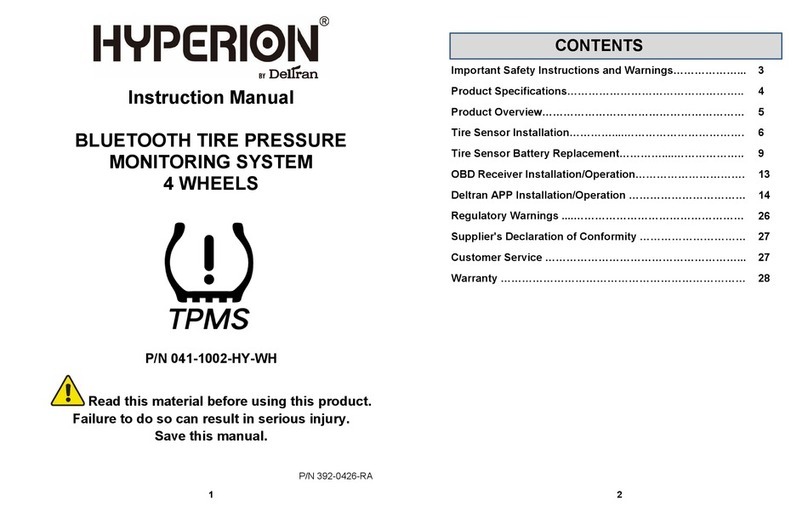
Deltran
Deltran HYPERION 041-1002-HY-WH instruction manual

